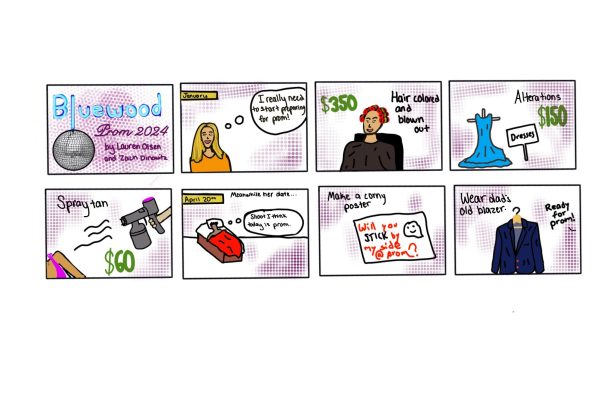Drowning in debt: Financial literacy needs to be taught in schools
May 11, 2023

Money. The abstract concept is one of the building blocks of our society. It is used to buy and sell goods; without it, society would completely collapse. Money can change peoples’ lives for better or worse, depending on whether they know how to spend, borrow, give and invest their money properly. Unfortunately, this level of financial know-how is becoming much more rare in recent years. According to a survey from the National Financial Educators Council, lack of financial literacy cost Americans over 1,800 dollars on average in 2022, up almost 500 dollars from 2021. With rising levels of inflation, taxes and scams, it is becoming vital for people to know what to do with their finances and how to manage their money. This is why we should have a class at Redwood that teaches students how to file taxes, spend and save money and keep their finances together.
Across the nation, young adults who have recently moved out of their parent’s houses face an issue: they don’t know how to handle money. In fact, according to a 2023 Bark survey, an astounding 71 percent of students don’t feel confident in their ability to file their taxes. This is an alarming fact if we put it in perspective: In just a few years, these students will need to file taxes all on their own, and there are no standards in place to teach them how. Financial incompetence is not just an issue at Redwood, either. Only 57 percent of adults are considered financially literate, according to the Standard & Poor’s Rating Services Global Financial Literacy survey.
One way this financial illiteracy crisis could be solved is with a financial responsibility unit in a preexisting class. For example, the social issues class is a required class that all students take, introducing ideas such as drug abuse, mental health and sexual health. These topics help guide students through many societal issues, and financial illiteracy would fit right into the curriculum. A six-week unit could go over topics such as how to file taxes, use a credit card properly, invest savings safely, and overall provide financial assistance.
Opponents of financial illiteracy classes in schools believe it is not the school’s responsibility to teach students how to deal with their money. Alternatives to learning in high school could be learning from parents, in an online course, or at college. Some Adversaries even argue that with new companies who you can pay to do taxes for you, and other forms of financial safety, Proficiency in the topic does not need to be taught at all. However, Learning it in high school has been proven to be the best way for young adults to learn about their financial safety. Using a nationwide survey, Professors Michael Gutter from the University of Florida and Zeynep Copur from Hacettepe University in Turkey found that college students who took a personal finance course in high school were more likely to save and pay off their credit cards than people who didn’t take a course. This demonstrates that the earlier students become involved in money management, the better prepared they are for handling money in the future and the more control they will have over their finances.
Benjamin Franklin once said, “Nothing is certain except death and taxes.” Taxes and debt have been a part of American society from its beginning, but as the lack of financial education across the nation proves to be a major issue, something needs to be done. Some U.S. states such as Alabama, North Carolina and Georgia have taken action, instituting laws that require the completion of a finance course to graduate high school. However, California is one of only three states with no requirements at all. Our lawmakers are immensely far behind, and if they do not make it required, our school district must do something about it.





















